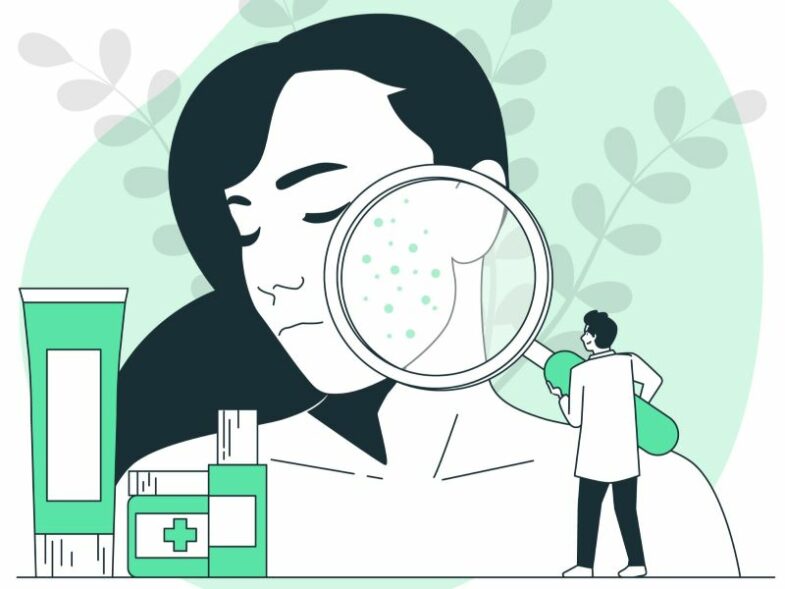In recent years, dermatology has steadily gained prominence among physician assistants (PAs) as one of the most sought-after specialties. This trend is not just a fleeting preference but a reflection of evolving professional aspirations within the PA community. Dermatology offers a unique balance between clinical complexity and lifestyle benefits, attracting PAs who seek intellectual challenges coupled with manageable work hours. The specialty allows practitioners to engage in diagnostic precision while developing long-term relationships with patients.
Another factor contributing to dermatology’s growing allure is the increased focus on skin health and aesthetics in the general population. The surge in public interest around cosmetic procedures, skin cancer awareness, and chronic dermatologic conditions has intensified the need for skilled professionals. PAs in dermatology are well-positioned to meet this demand, offering expertise in both medical and aesthetic dermatology. This dual capability ensures that physician assistants find variety and growth opportunities in their daily practice.
Moreover, compensation and job satisfaction are key drivers in specialty selection. Dermatology consistently ranks high in both areas, offering competitive salaries and job stability. Physician assistants in dermatology often report higher levels of job satisfaction due to patient gratitude and tangible treatment outcomes. These positive reinforcements, coupled with opportunities for procedural work, create a rewarding environment that continues to attract PAs nationwide.
Demand Outpacing Supply
The growing interest in dermatology among physician assistants coincides with a significant supply-and-demand imbalance in the field. The prevalence of skin cancer, autoimmune disorders, and other dermatologic conditions has escalated, placing a strain on available providers. As the U.S. population ages, the demand for dermatological services only intensifies, leaving practices scrambling to fill gaps with competent professionals.
Physician assistants are stepping up to bridge this critical shortage. Their advanced training and adaptability make them ideal for dermatology practices looking for skilled clinicians. Moreover, according to industry observers, PAs are not just filling roles but redefining them. They are taking on responsibilities once reserved for dermatologists, including patient consultations, biopsies, and minor surgical procedures.
The growing demand for physician assistants in dermatology is evident across healthcare settings, driven by rising patient volumes and the expanding scope of skin health services. Clinics and practices are increasingly turning to PAs to manage a diverse range of responsibilities, from diagnosing and treating chronic skin conditions to performing advanced procedures. This shift not only helps address staffing gaps but also enhances patient access and clinic efficiency. As the specialty continues to evolve, physician assistants are becoming central figures in dermatology practices, offering both medical and aesthetic expertise. The trajectory is clear: dermatology will remain a thriving and attractive specialty for PAs well into the future.
Competitive Compensation and Career Advancement
Dermatology stands out for its lucrative compensation packages, which are among the highest for physician assistants. Base salaries in dermatology frequently outpace those in primary care or other specialties. In addition to strong base pay, dermatology PAs often receive bonuses tied to productivity, patient retention, and procedural expertise. This financial upside is a significant factor influencing career decisions.
Beyond salary, dermatology offers exceptional career advancement opportunities. Physician assistants can pursue additional certifications in dermatology, becoming specialists who are highly valued in both private practices and larger healthcare systems. Procedural proficiency in areas like laser therapy, excisions, and cosmetic injections opens doors to higher earnings and leadership roles within clinical teams.
Additionally, dermatology practices often encourage entrepreneurial endeavors. Some PAs eventually open their own aesthetic clinics or partner in dermatologic practices, blending clinical care with business acumen. The financial and professional growth opportunities in dermatology are not just appealing—they are transformative, making the field a magnet for ambitious PAs.
Work-Life Balance and Professional Autonomy
Work-life balance is another factor propelling dermatology to the forefront of specialty choices for physician assistants. Unlike other medical fields that demand irregular hours, overnight shifts, or emergency call duties, dermatology often offers predictable schedules. Clinics generally operate during standard business hours, leaving weekends and evenings free for personal time. This structure appeals to professionals seeking a fulfilling career without sacrificing quality of life.
Professional autonomy also plays a significant role. PAs in dermatology enjoy substantial independence in patient care management. After adequate training and mentorship, they perform a wide range of procedures and make diagnostic decisions with minimal supervision. This autonomy fosters professional confidence and allows physician assistants to exercise clinical judgment in meaningful ways.
In addition, the patient population in dermatology is largely outpatient, with minimal hospital interactions. This factor reduces the stress associated with inpatient care and emergency scenarios. PAs can focus on building long-term relationships with their patients, contributing to job satisfaction and a sense of professional fulfillment.
Aesthetic Dermatology: Expanding Horizons
The booming interest in aesthetic dermatology has further amplified the appeal of this specialty. Physician assistants who develop expertise in cosmetic procedures are increasingly in demand. Treatments like Botox, dermal fillers, microneedling, and laser therapies are not only lucrative but also creatively rewarding. The ability to help patients achieve their aesthetic goals adds a dynamic dimension to clinical practice.
The aesthetic side of dermatology allows PAs to stay current with evolving techniques and technologies. Continuous learning is inherent in this field, with professionals attending workshops, certifications, and industry conferences. This constant evolution ensures that the work remains stimulating and professionally enriching.
Moreover, aesthetic dermatology provides an entrepreneurial avenue for physician assistants. Many eventually build personal brands, author publications, or become social media influencers in skincare and cosmetic treatments. This blend of clinical expertise and public engagement allows PAs to shape their careers in innovative and highly individualized ways.
Future Outlook for Dermatology PAs
The future for physician assistants in dermatology looks exceptionally bright. Advances in medical treatments and technology continue to broaden the scope of practice. From cutting-edge biologics for psoriasis to advanced imaging for skin cancers, PAs are at the forefront of implementing innovations that improve patient outcomes.
Legislative developments also favor the expanding role of PAs in healthcare delivery. Many states have introduced or are considering bills that grant greater practice autonomy to physician assistants. This shift enhances the attractiveness of dermatology as a specialty where PAs can truly excel and lead within clinical environments.
Finally, the increasing public awareness of skin health ensures sustained demand for dermatological services. Educational campaigns, media coverage, and the rising prevalence of skin-related conditions guarantee that dermatology will remain a growing field. For physician assistants seeking a specialty that offers professional growth, competitive compensation, and a balanced lifestyle, dermatology is not just an option—it’s a compelling choice.









